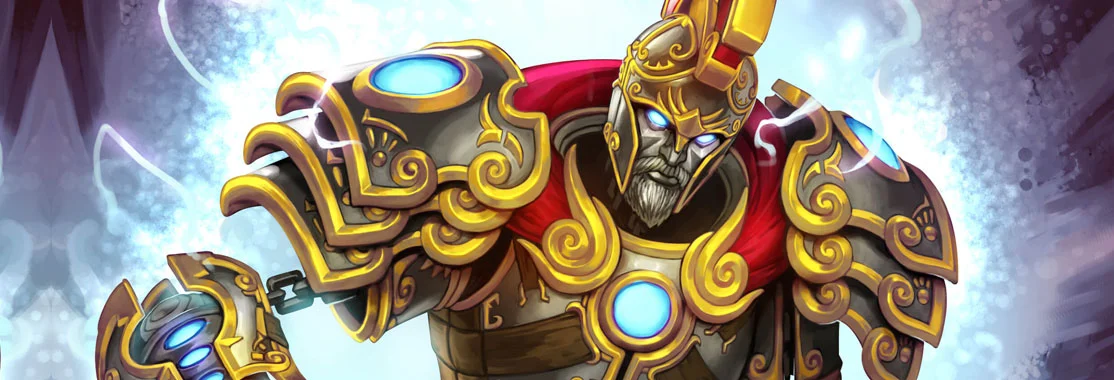
Join the conversation!
Share your thoughts on this article with the community.
The transition to Unreal Engine 5 has generated a lot of hype for Smite 2. Beyond its visual overhaul and core upgrades, the new engine introduces the possibility to create gameplay mechanics that were previously difficult or impossible. As Hi-Rez reveals its plans, the community watches with a familiar mix of hope and skepticism, eager for a sign that the studio is ready to truly leverage this new technology. There is no better test of this ambition than the eventual arrival of Janus, the God of Portals.
During the 1st year of Smite 2, Hi-Rez has a challenge pending: to demonstrate that they can evolve their game design in lockstep with their technical upgrades. While we've seen glimpses of interesting environmental interaction with the horizontal wall-dashing from Aladdin, these are simple mechanics compared to the huge potential in Janus's kit. His portals offer a unique opportunity to showcase what Unreal Engine 5 can truly do for gameplay.
In the original Smite, Janus's portals are a technically simple, straightforward teleport between two points. They function as glorified doorways—you enter one side and instantly appear at the other. The tactical layer is there, but it’s a binary choice. You can't see what's on the other side, you can't aim an ability through the portal with precision, and you can't use it for strategic scouting. It’s an illusion of passage, not a true window to another space.
This is where Unreal Engine 5 could change the game. The engine has the capability to render true, see-through portals. Imagine targeting a portal on a distant wall and seeing a real-time view of the battlefield on the other side. Picture a coordinated team launching abilities through that rift to snipe an objective or an unsuspecting foe. This would elevate Janus from a god of mobility to a master of tactical control, significantly changing the flow of a match.
The Monumental Technical Challenge
However, implementing this feature is a monumental technical challenge, especially in a fast-paced multiplayer environment. To understand why, let's break down the two main difficulties in more detail:
-
The Rendering Cost: The GPU's Double Workload
Think of your screen as a camera showing you the game world. To create a see-through portal, the game engine must place a second camera at the portal's exit and broadcast its view back to the portal's entrance. This means for every single frame, your graphics card (GPU) has to do its job twice.
- Rendering a Scene Twice: A modern game scene isn't just simple geometry. It includes millions of polygons, complex lighting, dynamic shadows, reflections, and post-processing effects. Forcing the GPU to calculate all of this for your main view AND the portal's view simultaneously is incredibly demanding and can cut performance in half or even more.
- Optimization Tricks: To manage this, developers use clever tricks to lessen the load of the second "camera." This can include lowering the resolution of the portal's view, reducing the detail of objects seen through it, disabling expensive effects like shadows within the portal, or even limiting the distance at which things are visible through the portal. The famous "recursive portal" effect (seeing a portal through another portal) is an exponential nightmare for performance, which is why it's almost never seen in games.
-
Network Replication: The Tyranny of Lag
In a multiplayer game, the server is the ultimate source of truth. It's the referee that decides exactly where everyone is and what has happened. Your computer just shows you a prediction of what it thinks is happening to make the game feel responsive. Portals make the referee's job a nightmare due to latency (lag).
- Synchronizing Reality: If you shoot a projectile at a portal, your PC shows it traveling instantly. But the server needs to receive the "I fired" message, confirm it's valid, calculate the projectile's new position and trajectory as it exits the other portal, and then send that updated information to every other player in the match. All of this has to happen in milliseconds.
- Complex Problems: A tiny error or delay in this process creates huge problems. When a projectile goes through, does it maintain its exact velocity? When a player steps through, are they instantly able to collide with enemies on the other side, or is there a slight delay where they are vulnerable? Preventing issues like players getting stuck, projectiles firing at the wrong angle, or abilities not registering correctly on targets on the other side requires incredibly precise and robust netcode.
Despite these hurdles, the technology is no longer theoretical, with several public examples proving it can be done:
- Marvel Rivals has already showcased a similar mechanic with Doctor Strange's portals.
- There are also multiple tutorials for Unreal Engine 5 portals online, like this awesome "Seamless Portal" guide from Dev Squared.
Conclusion
With Janus's release on the horizon, his introduction to Smite 2 will be a defining moment. It will be a choice between the safe path—importing his old mechanics with a new coat of paint—and the ambitious one. By embracing the challenge of creating true portals, Hi-Rez has the chance to deliver a genuinely next-generation gameplay experience and prove that Smite 2 is not just a visual upgrade, but a true evolution. The community is waiting to see which portal they choose while a few questions arise:
- Will Hi-Rez bring this new tech into Smite 2?
- Should they delay Janus if this feature isn't ready at launch?
- Does Smite 2 lose its purpose if they can't accomplish this challenges?
We're interested in knowing your opinion on this topic, so we're adding a poll that will be open for the next three days.
COMMENTS
Want to join the discussion?
Login to share your thoughts and interact with other commenters.